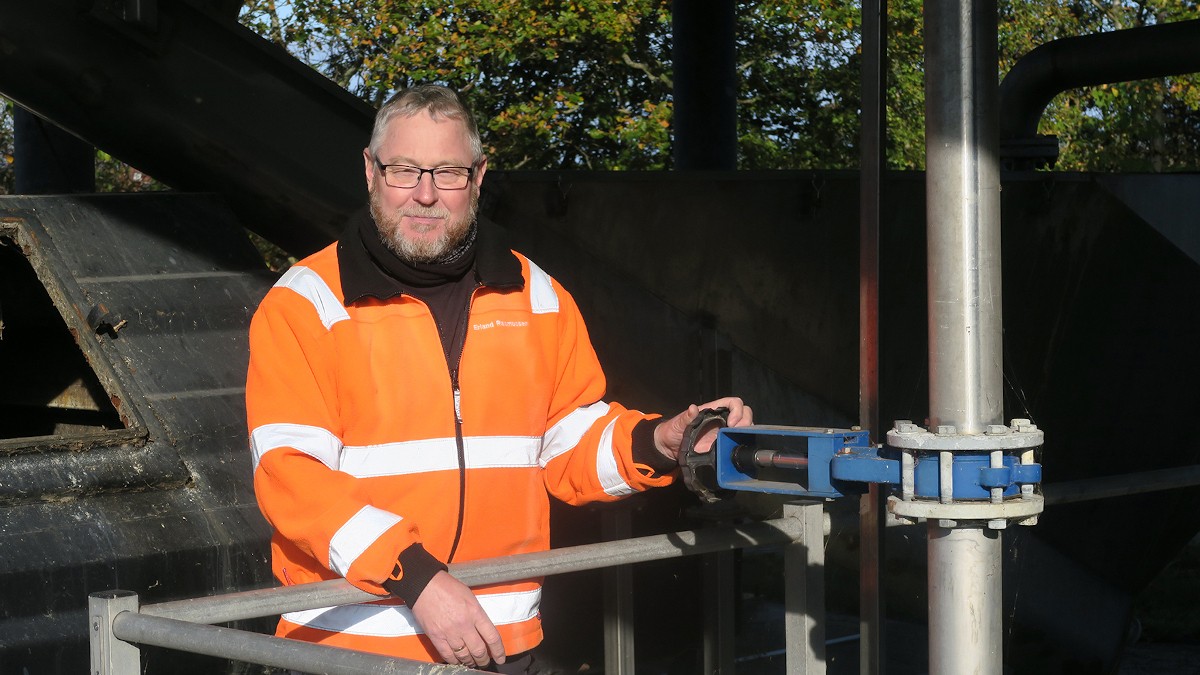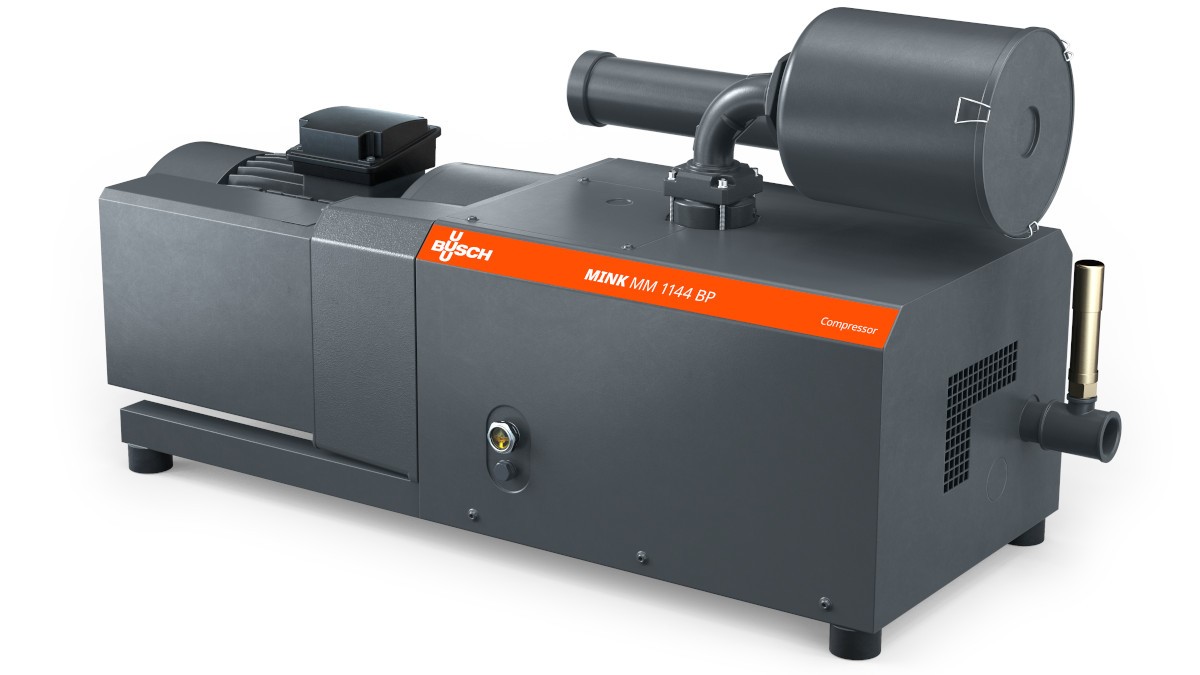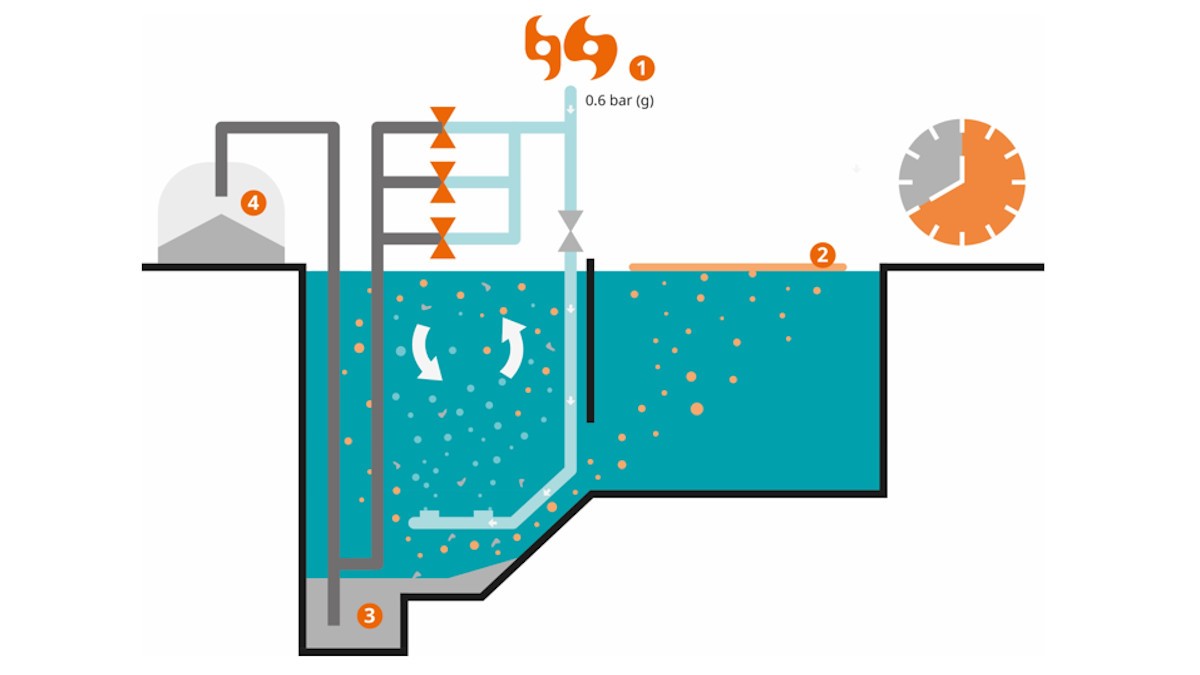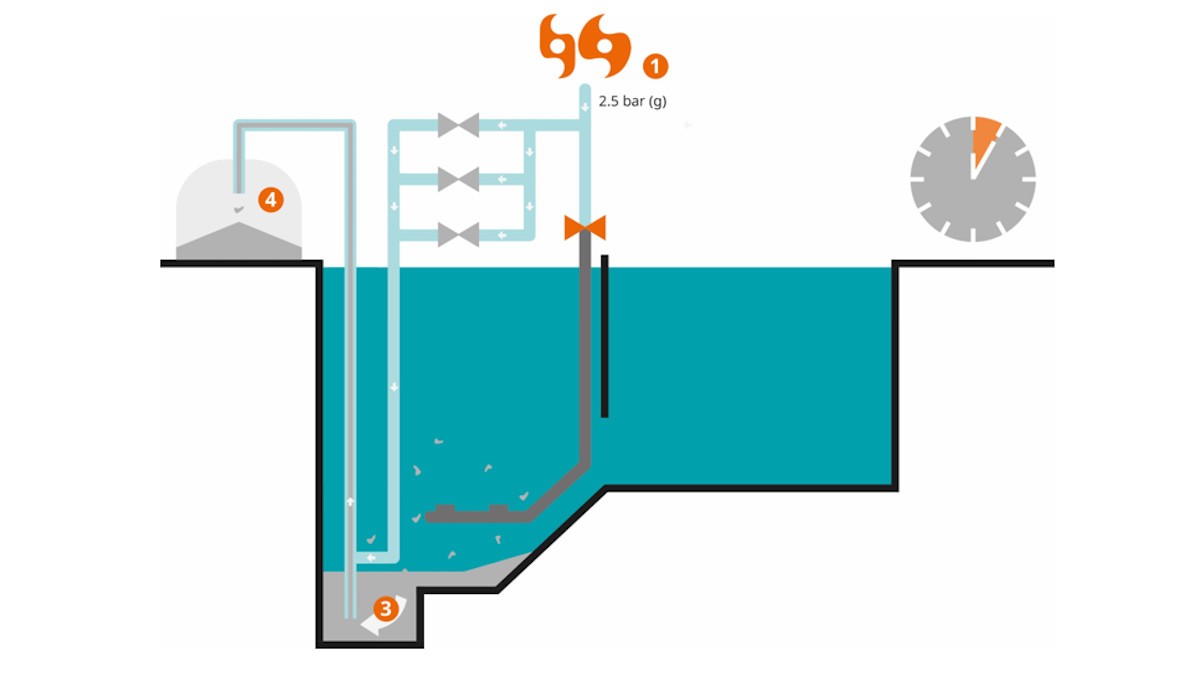Busch News & Media
Increase in Sand Trap Effectiveness Thanks to Adjustable Claw Compressor
Increase in Sand Trap Effectiveness Thanks to Adjustable Claw Compressor
Municipal Sewage Treatment Plant in Kerteminde
Kerteminde, Denmark
|
23.05.2022
|
4,5 min
Since it was first started up in 1993, the municipal sewage treatment plant in the Danish town of Kerteminde has used an aerated sand trap. However, it kept encountering problems when transferring sand out of the sand trap channel because the sand would compact and then could not be removed by the mammoth pump. The problem was resolved when the plant installed a
MINK claw compressor from Busch Vacuum Solutions, because the compressor is pressure-controlled and automatically increases the pressure in order to raise the compacted sand at the bottom of the chamber.
Process of waste water clarification
As the first treatment step in wastewater treatment facilities, aerated sand traps are an important process step for optimum and economical wastewater treatment. Separating out sand and other mineral materials protects downstream purification processes from damage caused by abrasion, blockages and, ultimately, from deposits. The sand removal system in the municipal sewage plant in Kerteminde, a town on the Danish island of Funen, is equipped with a
compressor that serves two purposes. During normal operation, it
aerates the wastewater in the sand trap using nozzles attached to the floor. This flow of air circulates the wastewater, which mechanically separates the sand from floating matter, such as grease and oil and the other organic suspended matter in the wastewater. The same compressor is also used to supply compressed air to the mammoth pump, which is used to suck sand out of the sand trap channel and feed it into a collecting tank.
In terms of capacity, the Kerteminde sewage plant is designed for a population equivalent (PE) of 25,000. Following its start-up in 1993, the sand trap was supplied with compressed air by a turbo blower. This blower delivered a maximum overpressure of 0.6 bar, which was sufficient for circulating the wastewater and separating sand and grease. However, the operations manager Erland Rasmussen (Fig. 1) had another problem. The sand collected in the sand trap channel would compact, meaning that it got stuck to the ground and could not be extracted by the mammoth pump because the overpressure of the turbo blower was too low. This problem was particularly bad when it rained, which increased the amount of sand in the wastewater. The sand could only be removed by switching off the sand trap and manually loosening the sand deposits, then extracting them with a suction tank vehicle. This work could often take one or two days, during which the sand trap was out of service. Furthermore, the cost of having this work performed by an external company was immense, not least because the process had to be performed several times a year.
Compressor solution from Busch and its benefits
Erland Rasmussen was looking for a better solution and consulted the vacuum and overpressure specialists at Busch Vacuum Solutions back in 2014. As a result, the existing turbo blower was replaced by a MINK claw compressor (Fig. 2) from Busch. This claw compressor is
frequency-controlled, enabling the overpressure to vary by changing the rotational speed. Its operating principle allows a MINK claw compressor to be operated in a range of 20 to 60 Hertz, thus covering the overpressure range of 0.4 to 2.5 bar. Using a PLC control system, the compressor is programmed to aerate the sand trap for 40 minutes (Fig. 3) and circulate the wastewater as a result. Erland Rasmussen calculated 0.6 bar as the ideal overpressure for ensuring optimum separation of sand and grease, which he programmed into the system. Once the 40 minutes have expired, the valves are switched over automatically and the MINK claw compressor increases the overpressure to 2.5 bar (Fig. 4). This loosens the sand on the bottom of the sand trap and stirs it up, enabling it to be sucked up easily and safely by the mammoth pump and transferred to a collection container. After five minutes of suctioning the sand, the aeration system control unit switches back to standard mode to separate sand and grease.
Erland Rasmussen has noticed another benefit. The MINK claw compressor requires a lot less current than the old turbo blower. The MINK claw compressor is equipped with a 9 kilowatt motor. It only reaches this nominal current briefly during the start-up phase for 2.5 bar mode, which lasts a mere five minutes. During the 40-minute long standard mode with an overpressure of 0.6 bar, the motor only needs a fraction of this nominal rating. For the sewage plant operator, this means that, beside eliminating the costs for manually removing the sand, the new solution has also allowed it to reduce the energy costs. Erland Rasmussen explains that the MINK claw compressor is also significantly quieter than the old turbo blower, as its rotational speed is much lower.
Kerteminde, Denmark
|
23.05.2022
|
4,5 min



